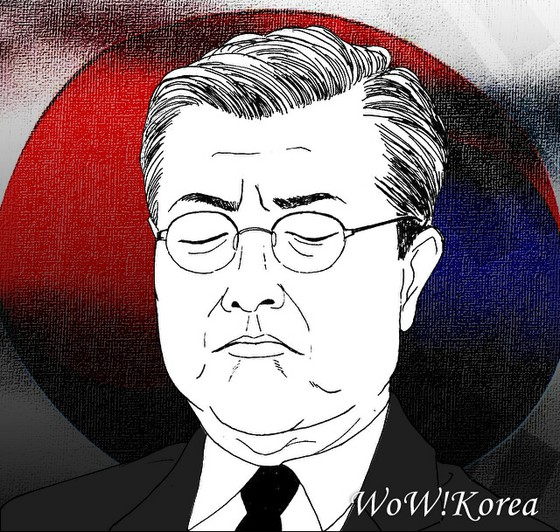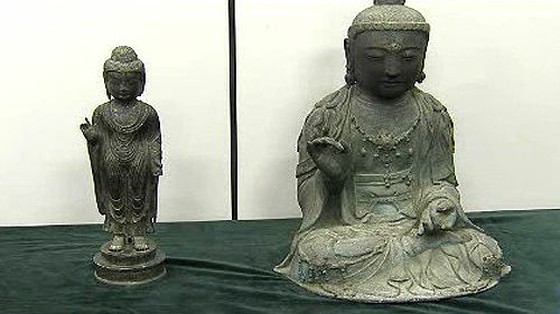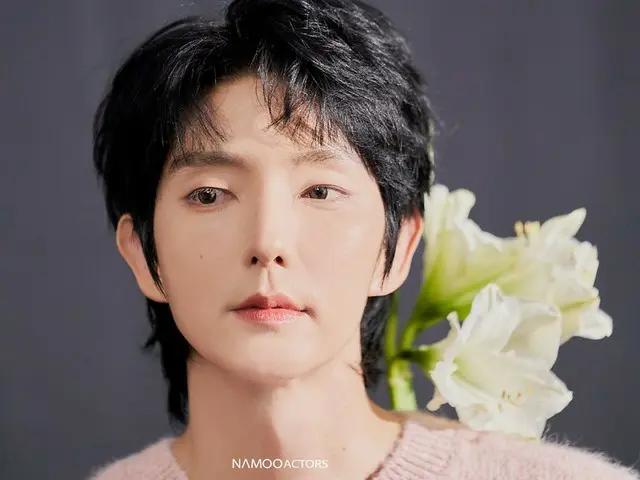  |
Two months later, a Korean thief was arrested by Korean police and two Buddha statues were seized. After that, the "Bronze Buddha statue" was returned to the Kaijin Shrine in 2015, but the "Kanzeon Bosatsu statue" has not returned to Japan even now.
"The statue was originally ours and was looted by Japan," claimed Psoksa (Buseoksa) in Seosan, central South Korea. This is because in 2013, a lawsuit was filed against the Korean government against the Korean government to apply for provisional disposition of the injunction against the return of the Buddha statue to Japan and to claim ownership.
In the first instance, the Korean court said, "There is a record of" Goryeo Kuozui "in the Buddha statue, but there is no record of it being relocated to Kannonji Temple in Tsushima." In addition, "There is a history book that" Wokou (Japanese pirate) "invaded the Mizuyama area five times after 1330, and it is judged that it was carried out by theft or looting, not by gift or sale." In 2017, it issued a ruling recognizing the ownership of Ukiishi Temple.
In response to this speculation logic, in the previous commentary article, "All things written as" Made in Japan "in Korea are stolen or plundered from Japan unless receipts and other acquisition records are kept for 700 years. It is said that it was done. "
At that time, Korean experts also raised questions about the decision of the first instance. The late Professor Emeritus Jung Young-ho of the Korean Faculty of Teachers University, who has studied the Korean Peninsula Buddha statue in Tsushima, said, "Even if the Buddha statue is a plunder, it will be returned by another plunder (theft by a Korean thief). "I can't justify getting it," he said. "There is no direct evidence that Japan has plundered Ukiishi-ji."
After the first trial decision, the Korean government has appealed, and the second trial is currently ongoing in the high court. At the end of last year, the South Korean government sent a letter to Kanonji Temple in Japan through a diplomatic route to encourage them to participate in the trial, and the temple has indicated its intention to respond.
However, the Kannonji side did not appear at the appeal hearing (second trial) held on the 15th. The Korean prosecutor, who represents the Korean government, insisted that the trial should be postponed until the Kanonji side participated, but the defense of Ukiishiji said, "The intention to participate in Kanonji is not clear. Should be. "
Nagasaki Shimbun, a former newspaper in Nagasaki Prefecture where Kannonji is located, reported in October last year that Ukiishiji wanted to do a "golden Buddhist affair" to paint the statue at the hearing of the appeal hearing in June last year. I showed my intention to the court. The purpose was expected, and the Korean court pointed out that it was necessary to obtain permission from the Kannonji side. In both Korea and Japan, unauthorized changes to the status quo of cultural properties violate the Law for the Protection of Cultural Properties.
Under the UNESCO Convention on the Prohibition of Illegal Exports of Cultural Properties in 1972, cultural properties stolen after the treaty came into effect in member countries are to be returned. South Korea ratified it in 1983 and Japan ratified it in 2002.
Therefore, regardless of whether or not the Buddha statue was looted to Japan, the Buddha statue was stolen by a Korean thief, so the first thing to do in the treaty is to return it to Kannonji.
The Buddha statue is currently stored at the National Institute of Cultural Properties in Daejeon, central Korea. This is because the Korean court has stated that "the Buddha statue must not be returned to Japan until the proceedings confirm that the Kanonji side has properly acquired the Buddha statue." The Japanese government is demanding a prompt return regardless of the proceedings.
On the 15th, the Korean prosecutor's office canceled the previous allegation that "the Buddha image (including the connection sentence) is fake" and admitted that "the Buddha image is genuine" while the appeal hearing is continuing. This is because when the thieves brought the Buddha statue to South Korea through the port of Busan, South Korea, they were identified as "the Buddha statue is a fake" during the customs clearance process.
The logic of the Korean prosecution was that "the Buddha statue is fake, so it is different from the real one owned by Ukiishi-ji", but the appraisal result of the Korean Cultural Heritage Administration is "the Buddha statue (including the connection sentence) is real". Therefore, I had no choice but to quit this logic.
When this happens, there is no choice but to raise a question. Is the Korean government and its agent, the Korean prosecutor, really willing to return the Buddha statue to Japan?
First of all, if it is recognized as genuine, customs clearance through Busan Port will be invalidated in October 2012, and the UNESCO Convention mentioned above will also apply. In other words, the Korean prosecutor's office must insist on the judge that the cultural property was brought in in violation of the treaty and is not subject to proceedings in Korea.
Second, the Korean government was hesitant to return to Japan from the time the thief was arrested and the Buddha statue was seized in December 2012 until the provisional disposition of Ukiishiji in 2013 to ban the return to Japan. is. After that, the request for provisional disposition was accepted, the trial began, and it has been a source of fire for Japan and South Korea for nine years.
Third, the Korean prosecutor's office has not appealed to the court that "Korean Ukiishi-ji" is legally different from "Korean Ukiishi-ji". In the trial, the old map confirms that "Koryo's Ukiishi-ji" and "Korea's Ukiishi-ji" are the same, but the following historical facts are ignored.
In 1392, 62 years after the Buddha statue was enshrined at the "Ukiishi-ji Temple in Goryeo", Goryeo was destroyed. "Confucian country" Korea was founded and violently suppressed Buddhism. There were 13,000 Buddhist temples in Goryeo, but only 36 Buddhist temples remained during the reign of King Sejong, the fourth king of Korea and the current main character of the 10,000 won banknote. rice field.
In other words, more than 99% of the temples were destroyed and turned into ruins. It is said that the "Ukiishi-ji Temple in Goryeo", which is not the 36 temples that remained until the 1400s, had no owner or manager for the next few hundred years.
As a matter of course, the Korean prosecutor's office is legally different from the "Korean Ukisekiji" that appears in the 1330 record (Korean prosecution) and the "Korean Ukisekiji", and it is legally different to claim ownership. I had to insist on the judge that he was there.
Considering the above three situations, the Korean government and the Korean prosecutor's office have appealed the decision of the first instance, but it seems that they are not very "motivated" to return the Buddha image to Japan through the second instance.
Unless Kanonji in Japan participates in the Korean trial in the midst of this corona, the trial of the second trial will end by the end of this year.
2021/09/21 21:04 KST


